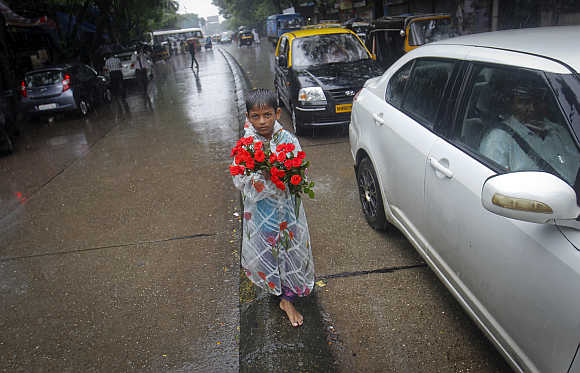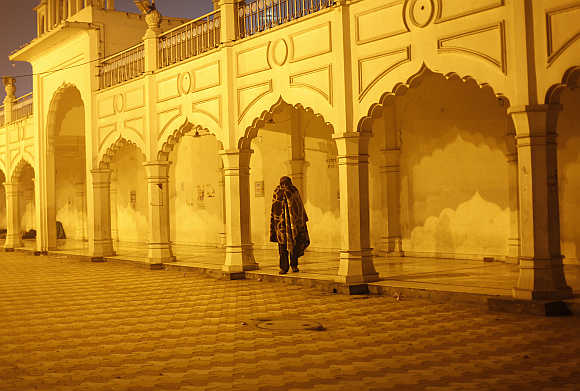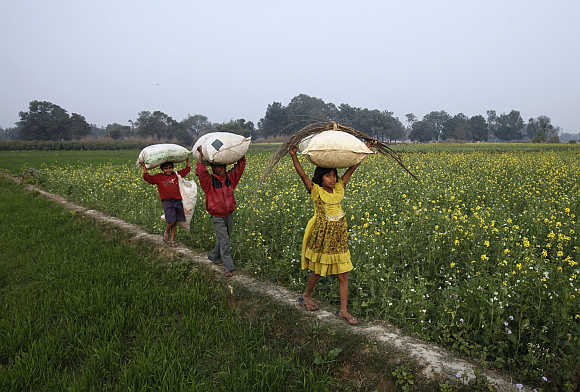 | « Back to article | Print this article |
Thin line between poverty and starvation
The poverty line given by the Planning Commission for 2011-12 has been ridiculed by some critics, who termed it a “starvation line”. However, one would not draw such an extreme conclusion if one compared it with the monthly per capita expenditure for that year.
The Planning Commission’s definition of the poverty line for 2011-12 is an expenditure of Rs 816 a month by a person in rural areas. This constituted 63.4 per cent of the per capita consumption in villages that year - Rs 1,287. The poverty line in urban areas, monthly expenditure of Rs 1,000 by a person, accounted for 40.37 per cent of per capita consumption in 2011-12.
Click NEXT to read more...
Thin line between poverty and starvation
According to economists, there could be a flaw in the National Sample Survey Office’s consumption survey method but the poverty line based on that at this level cannot be called a starvation line. However, the poverty line stood at a much higher percentage of per capita expenditure in 2004-05 and 2009-10. In 2004-05, for instance, the poverty line of Rs 578.80 accounted for 52.30 per cent of average urban expenditure by a person in a month at Rs 1,104.60.
In rural areas, the poverty line was Rs 446.68, which was 74.79 per cent of the per capita expenditure at Rs 678.8 in a month. In 2009-10, this percentage came down at 46.31 per cent in urban areas and 70.59 per cent in rural areas.
Click NEXT to read more...
Thin line between poverty and starvation
Pronab Sen, former chief statistician and now chairman of National Statistical Commission, said any poverty line could be countered. “We can endlessly debate the issue of poverty line. The important issue is not how many people are below this poverty line but whether poverty is declining over a period of time or not.”
The proportion of people living below the poverty line came down from 37.2 per cent (of the total population) in 2004-05 to 21.9 per cent in 2011-12 - a decline of 15.3 percentage points in a period that coincided with the first eight years of the United Progressive Alliance rule at the Centre.
Click NEXT to read more...
Thin line between poverty and starvation
In urban areas, the poverty rate fell 12 percentage points to 13.7 per cent from 25.7 per cent, while in rural areas 16.3 percentage points to 25.7 per cent from 42 per cent. The poverty line given by the Planning Commission is based on the methodology of the Suresh Tendulkar committee.
After the government drew flak for poverty lines of 2009-10, it appointed another committee under the Prime Minister’s Economic Advisory Chairman C Rangarajan to have a re-look at the poverty estimation methodology. The Planning Commission had asserted in its press note that while the poverty line may be revised by the Rangarajan Committee, it will not alter the fact of a decline.
Click NEXT to read more...
Thin line between poverty and starvation
“While the absolute levels of poverty would be higher, the rate of decline would be similar,” it had contended. However, the estimates for 2011-12 also drew strong criticism not only from the opposition parties, but a few allies of the UPA as well.
Heavy industries minister and Nationalist Congress Party leader Praful Patel said the ceiling set by the Planning Commission is “totally wrong”.
Planning Commission member Abhijit Sen explained that setting up of the poverty line is a normative exercise. In India, it continued from the 1970s, he said, adding that Suresh Tendulkar only modified it partially. There was no criticism then, but when 2009-10 poverty figures were disclosed, suddenly there were strong objections, he noted.
Click NEXT to read more...
Thin line between poverty and starvation
In fact, when the Tendulkar committee submitted its report on 2011, the proportion of those living below poverty line rose from 27.5 per cent based on earlier methodology (recommended by the Lakdawala Committee) to 37.2 per cent for 2004-05. At that time, the methodology drew kudos from many, who said this is the correct way.
However, the proportion of people in poverty in urban areas remained the same at 25.7 per cent, while those in rural areas rose from 28.3 per cent to 41.8 per cent for 2004-05. Statistician K L Datta, who has written on anomalies in the Tendulkar methodologies, explained that the late economist applied urban parameters to rural areas.
Click NEXT to read more...
Thin line between poverty and starvation
So, poverty in rural areas went up. According to Datta, Tendulkar did not find anything wrong in urban poverty estimates. Around two-third of the prices to arrive at the poverty line are taken from NSSO’s basket of consumption expenditure. However, consumption patterns change and the commodities that you look in one year may not be there over a period of time.
Earlier, it used to be consumer price index for agriculture labourers for rural poverty and consumer price index for industrial workers for urban poverty, Datta pointed out. He added that the rate of reduction in poverty will not change even if the poverty line changes.







